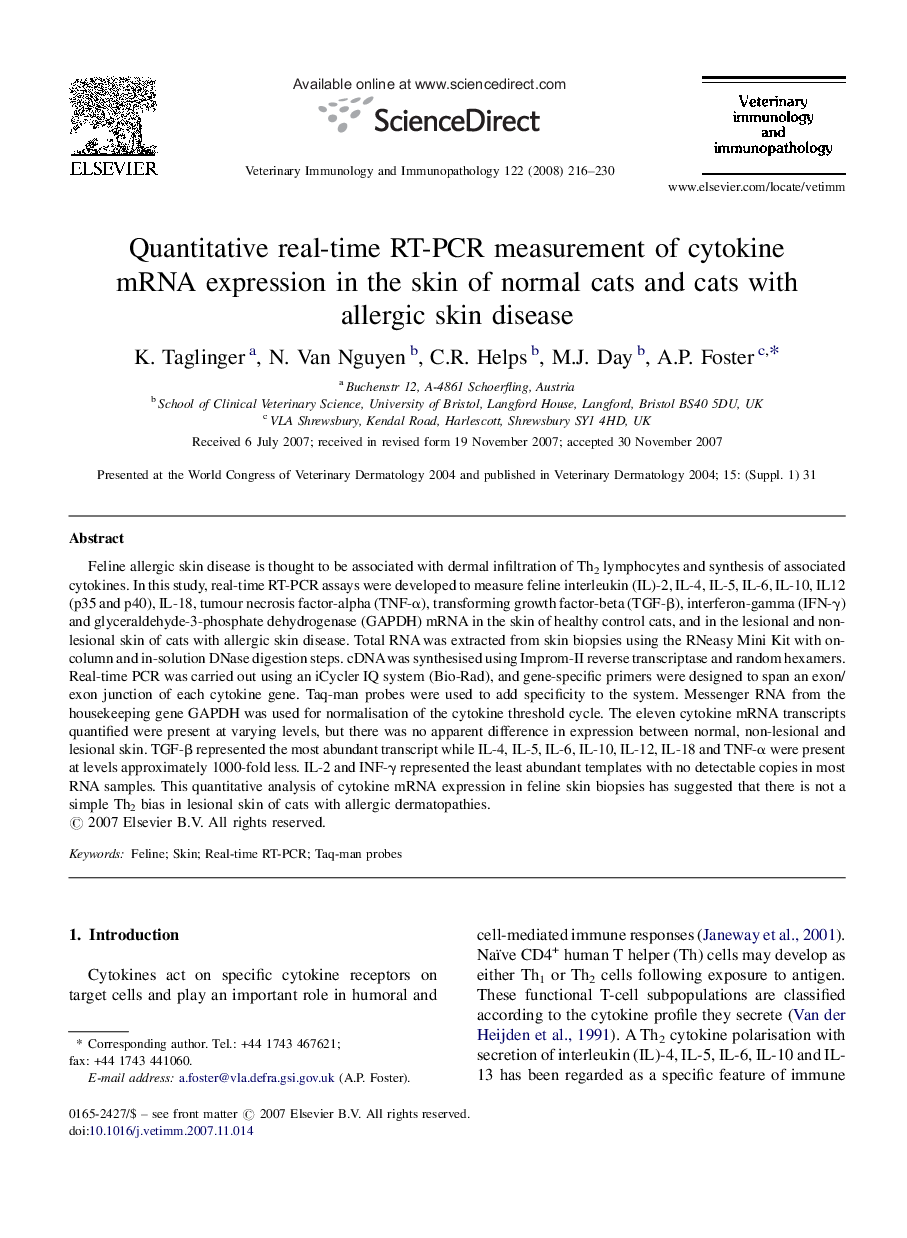| Article ID | Journal | Published Year | Pages | File Type |
|---|---|---|---|---|
| 2463006 | Veterinary Immunology and Immunopathology | 2008 | 15 Pages |
Feline allergic skin disease is thought to be associated with dermal infiltration of Th2 lymphocytes and synthesis of associated cytokines. In this study, real-time RT-PCR assays were developed to measure feline interleukin (IL)-2, IL-4, IL-5, IL-6, IL-10, IL12 (p35 and p40), IL-18, tumour necrosis factor-alpha (TNF-α), transforming growth factor-beta (TGF-β), interferon-gamma (IFN-γ) and glyceraldehyde-3-phosphate dehydrogenase (GAPDH) mRNA in the skin of healthy control cats, and in the lesional and non-lesional skin of cats with allergic skin disease. Total RNA was extracted from skin biopsies using the RNeasy Mini Kit with on-column and in-solution DNase digestion steps. cDNA was synthesised using Improm-II reverse transcriptase and random hexamers. Real-time PCR was carried out using an iCycler IQ system (Bio-Rad), and gene-specific primers were designed to span an exon/exon junction of each cytokine gene. Taq-man probes were used to add specificity to the system. Messenger RNA from the housekeeping gene GAPDH was used for normalisation of the cytokine threshold cycle. The eleven cytokine mRNA transcripts quantified were present at varying levels, but there was no apparent difference in expression between normal, non-lesional and lesional skin. TGF-β represented the most abundant transcript while IL-4, IL-5, IL-6, IL-10, IL-12, IL-18 and TNF-α were present at levels approximately 1000-fold less. IL-2 and INF-γ represented the least abundant templates with no detectable copies in most RNA samples. This quantitative analysis of cytokine mRNA expression in feline skin biopsies has suggested that there is not a simple Th2 bias in lesional skin of cats with allergic dermatopathies.
